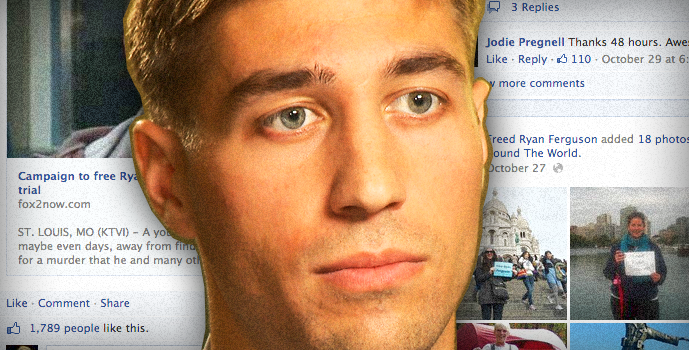
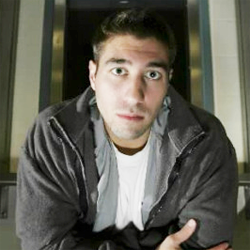 On the evening of Nov. 30, 2012, Ryan Ferguson, 28, sat in a Missouri prison cell -- wrongly convicted of murder and preparing to spend another 30 years serving time.
On the evening of Nov. 30, 2012, Ryan Ferguson, 28, sat in a Missouri prison cell -- wrongly convicted of murder and preparing to spend another 30 years serving time.
That same night, farther west in California, a couple Facebook employees happened to turn on "Dateline NBC."
The show that night was about the case that had put Ferguson behind bars -- a case that had baffled Ferguson, his family, his supporters, and numerous journalists and attorneys since the day Ferguson was arrested for murder in March 2004.
Killed was Kent Heitholt, a popular sports editor, who had been bludgeoned to death just footsteps from his office in the parking lot of the Columbia Daily Tribune in the early hours of Nov. 1, 2001.
Ferguson had been convicted of Heitholt's murder, even though not a shred of credible evidence linked him to the crime. The testimonies of key witnesses in the case had been discredited and physical evidence gathered at the scene of the crime showed Ferguson had not been there that fateful Halloween night.
For the Facebook employees, it became clear that they had to act. At their fingertips was their own creation, Facebook, the most powerful megaphone the world had ever known.
If Facebook couldn't free Ryan Ferguson, then nothing could.
"I couldn't get it out of my head"
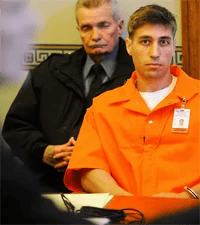 Enter East Coast television producer and Savannah Media founder, Richard Drew, who had encountered Ferguson’s story about a year earlier, in 2011.
Enter East Coast television producer and Savannah Media founder, Richard Drew, who had encountered Ferguson’s story about a year earlier, in 2011.
Drew had been viewing past episodes of “Dateline NBC” in hopes of sprucing up one of the previously aired news stories with a fresh angle for a new host.
“They asked me to rework a crime show,” said Drew, who works as an independent production consultant for NBC in New York City. “I had never seen ‘Dateline’ before because I don’t watch that show. I looked at five episodes and just randomly picked the Ryan Ferguson case.”
Soon after, the circumstances surrounding Ferguson’s conviction and imprisonment began to haunt Drew.
“No one ever expects to be sent to prison for a crime you didn’t commit,” Drew said in a telephone interview. “When the episode ended and I realized from the close-up that Ryan was still in jail, I honestly can say I did not sleep. I really struggled with it and I couldn’t get it out of my head.”
Abhorred by what they saw
Watching the "Dateline NBC" report, the Facebook employees, including company executive Mike Rognlien, had been similarly affected.
"Something about this particular story seems so completely unfair," Rognlien wrote in a Facebook post two days after the Dateline airing:
According to Drew, “Mike and loads of other Facebook people watched the ‘Dateline’ episode. They watched it and they were stunned -- they were really abhorred by what they saw.”
"It was an obvious injustice," said Rognlien. "And there was a clear need for the family and supporters to improve their Facebook presence."
Supporters had already established a Facebook group dedicated to proving Ferguson’s innocence and fighting for his release. But the group only had about 2,500 members.
“Mike posted on the group page. He said, ‘Hey, I work at Facebook and I would really like to help you with the Facebook campaign,’” Drew said.
Start a Facebook page
 Rognlien’s first suggestion was to start a Facebook fan page.
Rognlien’s first suggestion was to start a Facebook fan page.
“Ryan’s supporters had set up the Facebook group earlier, probably 2005 or 2006, around that conviction date,” Drew said.
"But we knew it was not working. After eight years in prison, to have 2,500 members when you had been featured heavily on CBS and NBC multiple times? Something was going wrong, and it needed to be fixed.”
"We knew we had to spread the word. We knew if we could get the word out and tell people the facts, it would help Ryan.”
And it worked.
“When the Facebook page was launched, it put gasoline on it," Drew said.
"With the group, you had to accept members. Having a Facebook page that people could like was a very important piece. We gained 10,000 people within two or three days, whereas the old group had 2,500 people in eight years.”
After six years of stagnant activity on Facebook, the new fan page launched and the campaign spread like wildfire.
A force for amazing, tremendous good
Rognlien knew what to do "to maximize the potential,” Drew explained.
“In the early days, Mike and a lot of the Facebook team were donating their ad space each month. Each Facebook employee is given ad space on Facebook,” he added. “They donated all their Facebook ad space to Ryan’s cause."
"The Facebook team became very involved and became very invested in this cause. They have been absolutely fantastic to show that Facebook can be a force for amazing, tremendous good.”
But the Facebook campaign still “needed a voice.”
Once the “Free Ryan Ferguson” Facebook page went live, its three administrators – Drew, Rognlien and Ferguson’s girlfriend, Myka Cain – began putting together a content strategy.
“I think this whole process, this whole campaign has been a learning experience for everyone,” Drew said. “I remember chatting with Ryan’s father, Bill. He said it to me in a really great way. He said, it’s literally like you are trying to build a plane in mid-flight.”
Humanizing an imprisoned man
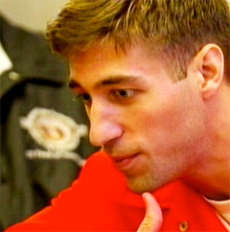 Because Ferguson was convicted of murder, they knew that humanizing the imprisoned man would be a challenge.
Because Ferguson was convicted of murder, they knew that humanizing the imprisoned man would be a challenge.
“A lot of local media in Missouri were very anti-Ryan in the early days. The system acted as though he was guilty," Drew said. "When CBS did the first show on Ryan, it was a little bit more balanced, it was a little bit more neutral, but it kept some doubt."
"When you hear the words ‘wrongfully convicted’ and somebody is in jail and they say ‘I’m innocent,’ your initial reaction is to roll your eyes and be skeptical. So the challenge was trying to get other people involved.”
The trio of Facebook admins began presenting the facts of the case using photos, videos, and links to news reports and court documents.
“Ten percent of the people were hardcore fans and they wanted to read every scrap of information they could find. Then, 90 percent of the people wanted to come on and just get the basic facts and show their support,” Drew said.
“We had to make the complicated facts accessible. We had to tell people why they needed to support this person.”
All while maintaining a positive tone, he stressed.
Keeping it positive and telling people what to do
“You can’t be angry. You’ve got to make people care about the person in prison. You’ve got to make them understand that this is a real human being and he needs help and you want to help him,” Drew said.
"It didn’t have to be dark and dreary. It was dark, but Ryan is a funny guy. Let’s not make this depressing and dark. Let’s put Ryan’s baby picture up and let’s tell funny stories about Ryan and let’s have a little fun.”
Some days the team posted multiple posts while other times they went two or three days without posting.
“When there was a lot going on we would post once or twice a day. But we didn’t want to put the same update every day, because that would just bore people. We didn’t want to overwhelm people’s news feeds,” Drew said.
Before launching the Facebook fan page, the social media campaign for Ferguson had lacked direction and clear calls-to-action.
“The Facebook page needed a voice, it needed direction, it needed to be telling people what to do. When it was a group, anybody could post anything they wanted. We needed two or three people to be the voice of the campaign, helping to keep people informed,” Drew said.
"The Facebook page was like a TV show, so we had to make it varied because this was going to take a long time to sort out. We needed to keep people engaged.”
The content strategy
The content was a mix of status updates, links and messages from Ferguson, Cain and members of the jailed man’s family.
“We always used pictures and videos because they got more attention and more likes,” Drew said. “We wanted baby pictures of Ryan. … Who is Ryan? What did he do in college and in school? What did he watch on TV and what music did he listen to?"
"We got all these pictures and we humanized him. We showed people who he really is and that worked really well.”
There was no place for typos, spelling errors or sloppily written posts.
“In this day and age, people will not tolerate that. It needed to look impeccable because if it looks shoddy, people will dismiss it,” Drew explained.
Calls-to-action included:
- asking fans to participate in call-in campaigns to the Missouri governor
- requesting that fans share the Facebook fan page with friends
- asking fans to sign a petition at Change.org
“There wasn’t a single day when we didn’t have new people join the page. Every day it grew, and if a show aired, or something big happened, it would grow a lot,” Drew said.
Dealing with negativity
Still, there were missteps along the way, like when Drew posted a photograph of Kevin Crane, the embattled prosecutor in the case.
“I said something like, ‘Kevin Crane withheld evidence and this is what else he did,’” Drew said. “It just backfired. People went on the page and insulted Kevin Crane. There was swearing and there were insults, so we pulled the post because it just wasn’t productive."
"A lot of people were angry, but we needed to channel their anger. We were using the Facebook page in a constructive way. We didn’t want to make it the anti-Kevin Crane site. That anger wasn’t going to help Ryan.”
On the flip side, those who disparaged Ferguson on the Facebook page were quickly banned.
“We got random people who would just come on the page and say Ryan was guilty. We would delete those comments and ban them instantly. It wasn’t the ‘Ryan Ferguson is Guilty’ page, it was the ‘Free Ryan Ferguson’ page,” Drew explained.
"If you want to start that page, start the page, but don’t come on this page and tell us Ryan is guilty and try to argue the facts. We were not going to tolerate it. Anybody who read the facts knew he was innocent. These people were uninformed and we didn’t want uninformed people poisoning the well.”
We wanted people to ask questions
It’s not that page administrators discouraged questions or reasonable discourse about the case.
“We wanted people to ask questions,” Drew said. “What we didn’t want, was somebody to make a comment and then other people comment on the comment. You just end up with an avalanche of negativity on the page.”
Among Ferguson’s Facebook fans were a handful of people working in the legal field.
“They were key Facebook supporters,” Drew explained. “They were our legal experts. We could ask them legal questions and when a legal issue came up, they would jump on Facebook and answer people’s questions. It was brilliant. They knew the case like the back of their hand.”
Like a snowball going down a hill
After the “Dateline NBC” episode aired last fall, the “Free Ryan Ferguson” Facebook page picked up 10,000 likes in a matter of days.
Here's a post from Rognlien only a few days after the page's launch:
“When we turned it from a Facebook group into a Facebook page, we knew the page would get a lot more likes, and it instantly went through the roof,” Drew said.
"In the last year we went from 2,500 people on Facebook to more than 80,000 people. And the petition went from 800 signatures to 266,000 in the space of 11 months. We ended up in the top 25 all-time petitions on Change.org ever!”
Social media even helped generate news coverage as some of the nation’s top journalists used the Facebook fan page as a resource for reporting their stories.
“People were quoting the Facebook page. News sources were talking about the Facebook page and the signatures,” Drew said. “They were quoting quotes that we had put on the Facebook page. So we became a news source for them.”
Meanwhile, the fan page administrators continued building their army of supporters.
“Before the Facebook page, supporters weren’t really championing Ryan because there wasn’t a place they could go to get involved,” Drew said. “It’s like a snowball going down a hill, it starts very, very slowly, then it picks up and it picks up and it becomes an avalanche.”
"You start to lose trust in society and humanity"
A decade ago, Ferguson was sentenced to serve 40 years in prison. On Nov. 12, he left his cell a free man. He spoke to his supporters during a press conference following his release.
“I really wish I knew what to say to those people because they are so incredible and they have helped my family and I so much. I really wish I knew a way to give back to all of them because them being there and supporting us and doing everything they can – they designed the image on my father’s car and the billboards and they’ve sent me so many letters, just so many incredible things that we’ve all appreciated so much. … Their help was invaluable,” Ferguson said.
"Being in prison for a crime you didn’t commit, you start to lose trust in society and humanity and you see so many negative sides of it, but through those people I was able to see that there are so many incredible human beings out there and that I really want to be back in society with all those good people. … It gave me hope in humanity.”
Without Facebook, however, the voices of many supporters might have never been heard.
We waged war, basically
“In 1995, people would have watched CBS and said, ‘Oh, that’s really sad.’ But they couldn’t have done anything. They could have maybe written a letter, but they wouldn’t have known who to write to. There was no one to tell them where to go and what to do,” Drew said.
"For every bad person in the Missouri justice system who worked against Ryan, there were 10,000 people who wanted to help him and stood up and supported him. Using Facebook, we were putting pressure on where it needed to be.”
The supporters were troops, but the Facebook army needed somebody to direct them.
“And that’s what we did with social media. We were able to direct people and tell people what to do and how to take action. We waged a war, basically,” Drew said. “We were not going to back down. We were never going to go away. As long as you mobilize on social media, you will only grow and grow.”
"It was really a question of how long did the state of Missouri want to put up with this. Was it going to be a quarter-million signatures, or was it going to be a million signatures or five million signatures, how much were they going to put up with?”
"He had never been on Facebook"
For those aiming to mount similar campaigns on Facebook, Drew said it’s important to use an open fan page instead of a group or profile, where Facebook users must send friend requests to gain access.
But when Ferguson was locked up, Facebook fan pages didn’t even exist.
“Facebook barely existed when Ryan went away,” said Rognlien via his Facebook profile. “I think he’s pretty pleased about the last year, though.”
Ferguson didn’t have a Facebook profile and wasn’t allowed to access social media while in prison.
“He couldn’t see any of this. He had never been on Facebook,” Drew said. “He had never used a smartphone.”
You need good people around you
Successfully managing a Facebook campaign like this one also required a high level of expertise.
“It was a real team effort. We had people we could draw upon and it worked fantastically,” Drew said.
“Ryan needed Erin Moriarty and supporters at NBC and CBS to fight the fight on the national stage, he needed Kathleen Zellner on the legal front and honestly, he needed [Rognlien] and myself on social media.”
"You need people who are experts in their areas. And I think the problem in the early stages was that Ryan didn’t have the right people around him.”
According to Drew, “the combination of me being a TV producer with some social media experience and Mike being a Facebook expert really helped power that through.”
"If you don’t know what you’re doing, it will look bad.”
Freed by a Facebook page
Drew credited the Facebook fan page for helping expedite Ferguson’s release.
“I wish I had known about Ryan seven years ago, I wish we all had because then he maybe wouldn’t have had to spend nine years, eight months and two days in jail,” he said.
"If we hadn’t had all this social media coverage and all this momentum, I don’t know that the attorney general would have just dropped the charges that quickly. I think we were able to wrap this up quicker than it would have happened otherwise because there was just so much pressure and so much momentum."
"Twenty years ago, Ryan Ferguson would be in a very different place.”
Ferguson, 29, was released from prison on Nov. 12. Today, the focus of his Facebook campaign has shifted from freeing the man to raising money to help kick start the rest of his life. The name of the Facebook page has even been changed from “Free Ryan Ferguson” to “Freed Ryan Ferguson.”
“We’re doing one more big push to help him get on his feet,” Rognlien said via Facebook. “Please consider joining me in contributing whatever dollar amount you can to help get Ryan set up with the basics we all take for granted. Yes, that includes shoes.”
Takeaways for Facebook Campaigns
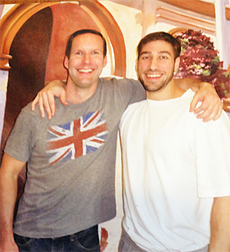 Drew and Ferguson
Drew and FergusonAccording to Drew, if you’re looking to establish and grow a movement in Facebook, you should:
- Start a Facebook fan page, not a group
- Use the right language in posts and find the right link or photo to match those words
- Accept that it’s a long process
The legal process moves slowly and you’ve got to keep people engaged. You’ve got to think about how am I going to keep people engaged week after week and month after month and year after year?
- Stay positive
Don’t get angry. Don’t get bitter and negative about it.
- Tag others – including journalists, politicians and celebrities – from the Facebook fan page
- Provide variety for fans
Before oral arguments in September, we did a 20-day countdown. Every single day there would be a different post.
- Entertain fans by simplifying complex information
This case was complicated. We needed to break it down in nuggets so people could understand. For example, Ryan’s bail was set at $20 million. That’s the highest bail ever set for murder in the entire U.S. -- for a 19-year-old college student!
- Don’t try to do it yourself
We had people with real skill sets. Hire professionals. Or find someone to invest who wants to help… or find skilled volunteers who will work for free.
- Use the Facebook fan page to leverage media coverage
Every time 48 Hours would air an episode we would get a huge rise. People would inevitably finish the show and go first to the website or the Facebook page. It caused a huge explosion in numbers.
- Use many calls-to-action
We had ways for people to take action, sign the petition, call the governor, read this article, watch this clip, share the fan page.
- Work hard
We knew what we were doing, so creating the actual posts was not difficult. It was just the time moderating comments and putting these posts up. It needs a lot of work but I would do it again for the right cause.
It’s very powerful to know that you can make a difference. I would just say to people, don’t stand on the sidelines! Get involved!... Because Ryan needed help.
Conclusion = Freedom
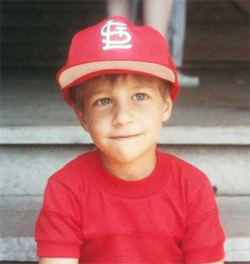
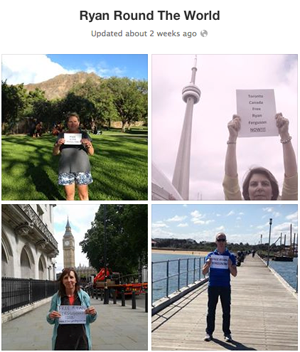
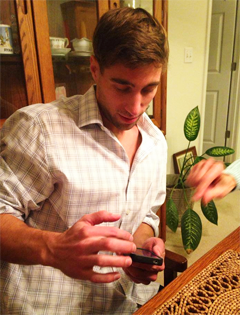
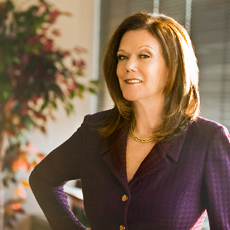
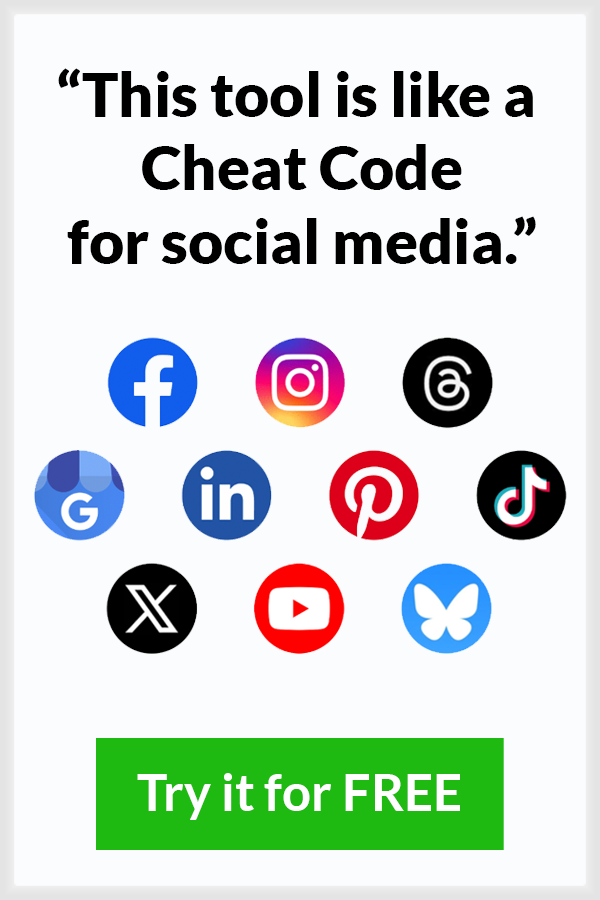



No Comments